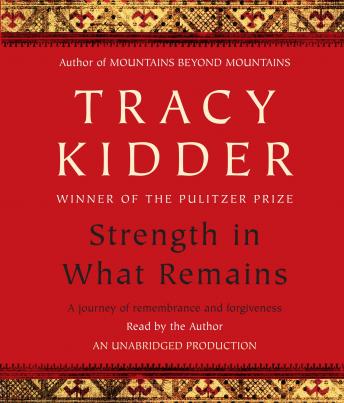
: 127–128 In a 1984 interview he said, "McPhee has been my model. : 5 He has cited as his writing influences John McPhee, A. Kidder is considered a literary journalist because of the strong story line and personal voice in his writing.

He has received praise and awards for other works, including his biography of Paul Farmer, a physician and anthropologist, titled Mountains Beyond Mountains (2003). He received the Pulitzer Prize for his The Soul of a New Machine (1981), about the creation of a new computer at Data General Corporation. John Tracy Kidder (born November 12, 1945) is an American writer of nonfiction books. Kidder keeps the reader aware that the story as a whole is a tragedy, and that this tragedy threatens to return in nations like Burundi and its neighbors.Tracy Kidder at the College of Wooster, 2009 He becomes a student at Columbia University and later goes on to build medical clinics in his home nation. These include Americans such as Sharon McKenna (who helped Deo as he struggled in Manhattan) and Charlie and Nancy Wolf (who took him into their home for an extended time), as well as Burundians, such as his medical school friend, Jean, and even some anonymous citizens (including a sympathetic Hutu woman).ĭespite the horrific context, Deo’s story is triumphant. He also illustrates the importance of the fortuitous intervention of kind and generous people-often strangers.

In doing so, he offers a vivid picture of what happened and what it was like to experience this for someone who endured it. By following the life of a single individual, Kidder-who met Deo many years after Deo’s exodus and immigration-creates a narrative to reveal to a Western reader the effects of the genocide. In Part 2, “Gusimbura,” the author provides his first-person account of meeting Deo and the effect their subsequent travels had on him.

Through the use of flashbacks, readers learn not only about the genocide from which Deo escaped, but also of the background leading up to this genocide and the continuing struggles Deo endured as he made his way as an immigrant in New York City. Part 1, “Flights,” shifts the narrative to several years earlier when Deo first arrived in New York City from Burundi.

In the Introduction, readers first encounter Deo on a journey with Kidder to revisit the sites of the Hutu-Tutsi atrocities of the 1990s. Kidder does not narrate the book in a simple chronological format the two parts alternate between Deo’s story before and after he escapes Burundi.


 0 kommentar(er)
0 kommentar(er)
